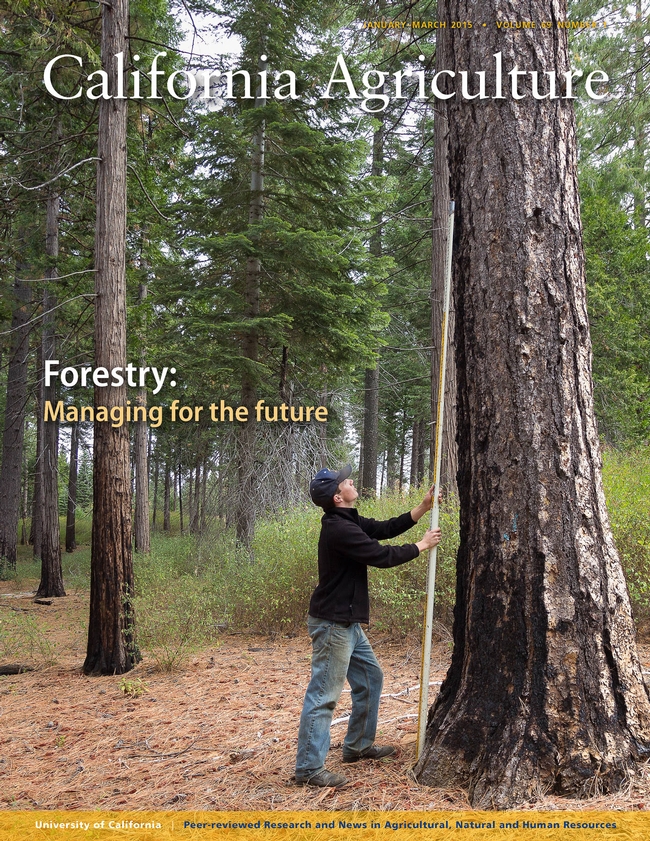
The latest issue of California Agriculture is devoted entirely to forestry, starting with the editorial on 100 years of forestry at UC Berkeley by College of Natural Resources Dean Keith Gilless. Other articles are listed below.
Research news:
Fewer trees, more water, safer forests: The Sierra Nevada Watershed Ecosystem Enhancement Project is investigating how tree thinning — which is needed urgently in much of the Sierra Nevada due to long-term fire suppression — may increase the water yield from forested watersheds by as much as 10 percent. Monetizing this increased water yield, as well as other benefits from healthier forest ecosystems, could help fund forest management.
Forest thinning may increase water yield from the Sierra Nevada
Protecting oak woodlands: On California's North Coast, grassy oak woodlands are being invaded by stands of Douglas fir at an alarming rate. A UC ANR–led research team is working to understand the reasons why and guide efforts to reverse the trend.
Conifer encroachment study will inform efforts to preserve and restore North Coast oak woodlands
Peer-reviewed Research
Remote sensing: The powerful mapping capabilities of Lidar soon may be widely available to California forest managers as costs fall and the technology improves.
Mapping forests with Lidar provides flexible, accurate data with many uses
Maggi Kelly and Stefania Di Tommaso
Forest carbon: Private forests that are harvested and regenerated yield approximately 30 percent more carbon sequestration benefits than if they are left to grow.
Carbon calculator tracks the climate benefits of managed private forests
William C. Stewart and Benktesh D. Sharma
Forest management: A long-term study in the Sierra Nevada confirms the negative consequences of preferentially removing large trees.
Large-tree removal in a mixed-conifer forest halves productivity and increases white fir
Robert A. York
Post-fire ecology: Nearly 30 years after a burn at two sites in northeastern California, sagebrush had recovered fully and invasive grasses had diminished.
Post-fire vegetation dynamics of a sagebrush steppe community change significantly over time
Sara K. Hanna and Kenneth O. Fulgham
Community engagement: All sides of the Sierra Nevada forest management debate have learned from SNAMP. Can stakeholders help ensure research results are part of future management?
UC plays a crucial facilitating role in the Sierra Nevada Adaptive Management Project
Adriana Sulak, Lynn Huntsinger and Susan D. Kocher
Ecosystem Restoration: A cooperative meadow restoration plan that successfully engaged a diverse group of stakeholders is a model for future projects.
Cooperative, cross-boundary management facilitates large-scale ecosystem restoration efforts
Erin Kelly and Jonathan Kusel
Community Fire Safety: The collaborative partnership has improved fire safety at the urban-wildland interface in fire-prone communities of Plumas, Butte and Yuba counties and stopped major wildfires.
UC Cooperative Extension works with fire safe councils to reduce wildfires
Glenn A. Nader and Michael De Lasaux
The entire California Agriculture issue can be downloaded at http://californiaagriculture.ucanr.edu.
California Agriculture is a peer-reviewed journal of research in agricultural, human and natural resources published by the University of California Division of Agriculture and Natural Resources. For a free subscription, visit http://californiaagriculture.ucanr.edu, or write to calag@ucanr.edu.